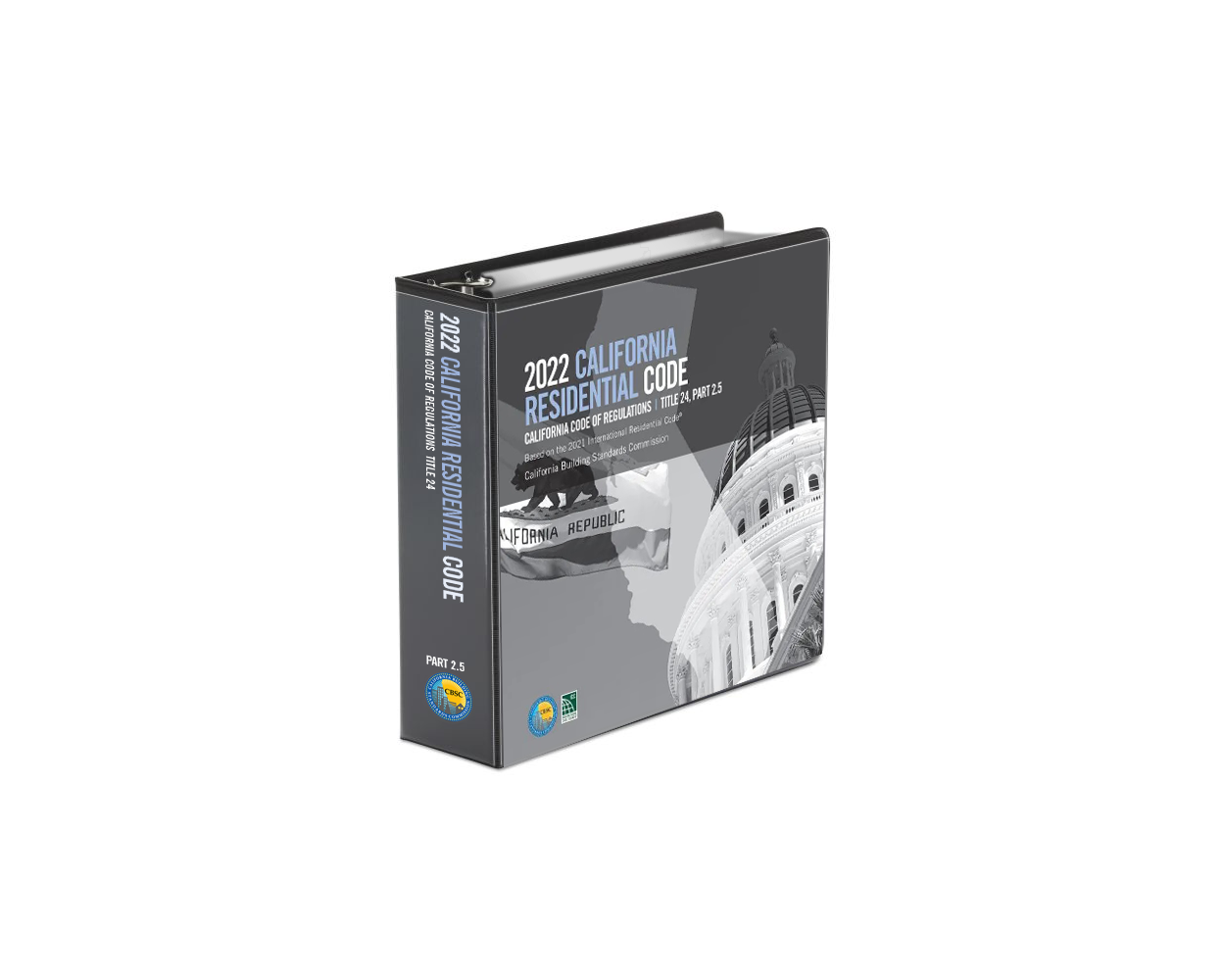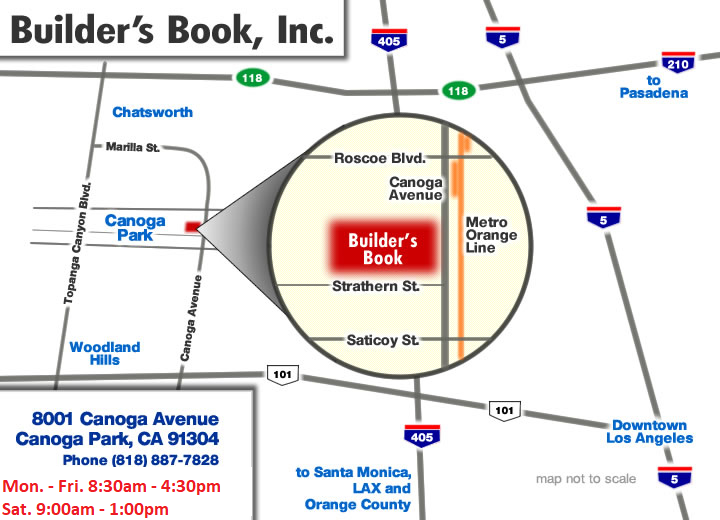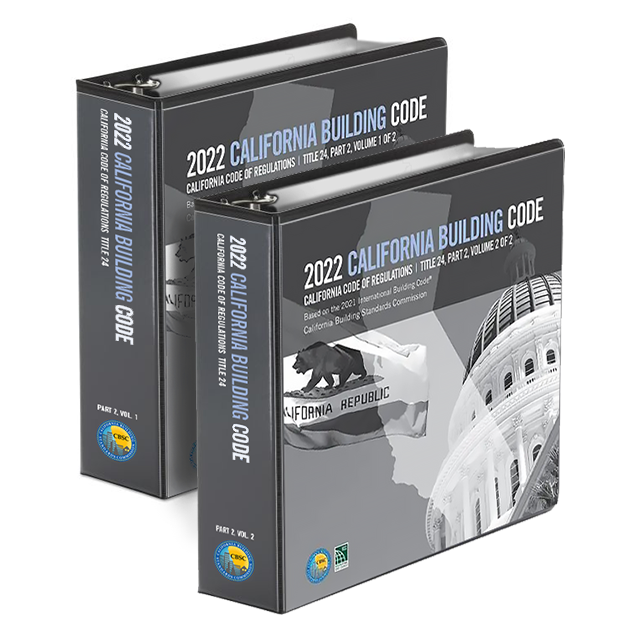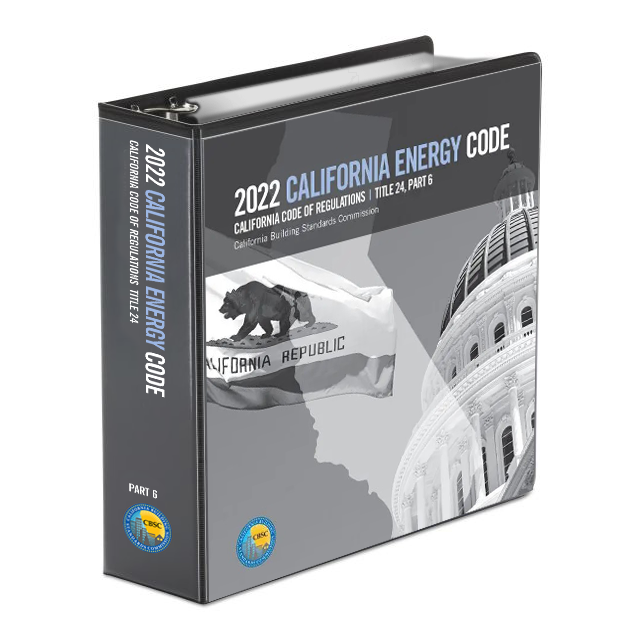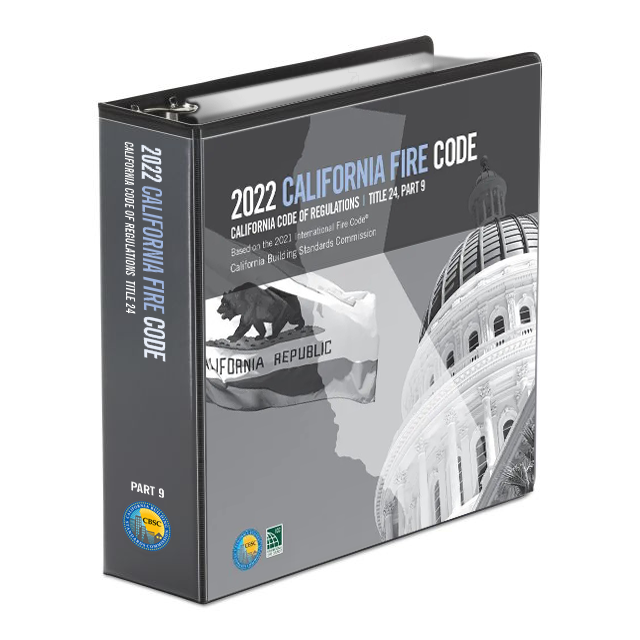2022 California Residential Code, Title 24, Part 2.5
Order today and receive a FREE Quick-Card!
Introduction:
Embark on a journey into the intricacies of residential construction with the 2022 California Residential Code, Title 24, Part 2.5. This comprehensive code stands as a beacon, guiding the construction of one- and two-family dwellings and townhouses that are three stories or less. Rooted in the robust foundation of the 2021 International Residential Code®, this fully integrated California Residential Code (CRC) harmonizes with model code formats while addressing unique California conditions. In this extensive exploration, we will uncover the key features that distinguish this code, delve into the diverse topics it covers, provide insights into its effective utilization, identify the broad audience set to benefit, and conclude with the overarching significance of the California Residential Code in shaping the residential construction landscape.
Key Features:
-
Integrated with International Residential Code (IRC): The 2022 California Residential Code is not an isolated entity; it is seamlessly integrated with the 2021 International Residential Code (IRC), specifically Chapters 2-10. This integration ensures a global standard while catering to the unique needs of California.
-
Consistency with Model Code Format: California amendments within the CRC are designed to maintain consistency with the model code format. This not only streamlines code interpretation but also facilitates a unified approach to residential construction standards.
-
Compliance with State and Federal Laws: The CRC is crafted to align with state and federal laws and regulations. This commitment to compliance ensures that residential construction adheres to legal frameworks, fostering safety and regulatory adherence.
-
Addressing Unique California Conditions: California's diverse geography and climate necessitate specific considerations in construction. The CRC caters to these unique California conditions, ensuring that residential structures are designed to withstand and adapt to the state's particular challenges.
-
Exclusion of Energy, Mechanical, Plumbing, and Electrical Standards: The CRC maintains a focused scope by excluding Energy, Mechanical, Plumbing, and Electrical standards. These aspects are efficiently addressed in other parts of Title 24, ensuring a streamlined and organized approach to code interpretation and application.
Topics Covered:
-
Building Provisions for One- and Two-Family Dwellings: The CRC comprehensively covers building provisions for one- and two-family dwellings, providing a detailed guide for the construction of these residential structures.
-
Townhouses (Three Stories or Less): Extending its coverage, the CRC includes provisions for townhouses that are three stories or less. This ensures a holistic approach to residential construction, catering to the diverse housing needs within California.
How to Use:
Effectively navigating the 2022 California Residential Code involves a strategic approach:
-
Reference to International Residential Code (IRC): Initiate your exploration by referencing the integrated International Residential Code (IRC). This provides a foundational understanding and sets the stage for more specific California amendments.
-
Consistent Application of Model Code Format: Leverage the consistent application of the model code format. This ensures a standardized interpretation of the code, facilitating efficient navigation and application in residential construction projects.
-
Compliance Check with State and Federal Laws: Regularly check for compliance with state and federal laws and regulations. This proactive approach ensures that residential constructions align with legal frameworks, mitigating potential issues during and after the construction process.
-
Consideration of Unique California Conditions: Emphasize the consideration of unique California conditions. Whether it's seismic activity, wildfire risks, or specific climatic challenges, understanding and incorporating these conditions into residential designs is crucial for long-term resilience.
-
Collaboration with Other Parts of Title 24: Recognize the exclusion of Energy, Mechanical, Plumbing, and Electrical standards and collaborate with other parts of Title 24 for a comprehensive approach. This ensures that all aspects of residential construction are addressed efficiently and in accordance with the relevant standards.
Who Can Benefit:
-
Architects and Designers: Navigate the complexities of residential design with a clear understanding of the CRC, ensuring compliance with California-specific conditions.
-
Builders and Contractors: Streamline construction projects by adhering to the CRC, benefiting from a unified and standardized approach to residential construction.
-
Engineers: Design structurally sound and compliant residential structures by incorporating the provisions outlined in the CRC, addressing both one- and two-family dwellings and townhouses.
-
Code Enforcement Professionals: Ensure regulatory adherence and safety in residential constructions by applying the CRC in inspections and compliance assessments.
-
Homeowners and Buyers: Gain insights into the standards governing residential constructions, ensuring that your home is designed and constructed in compliance with the CRC for enhanced safety and longevity.
Conclusion:
In conclusion, the 2022 California Residential Code, Title 24, Part 2.5 emerges as a pivotal resource in the landscape of residential construction. It not only sets the standard for building provisions but also reflects a commitment to safety, compliance, and adaptability to California's unique conditions. Whether you're an architect shaping the future of residential design, a builder constructing the foundations of homes, or a homeowner seeking assurance in your dwelling's construction, the CRC stands as a guidepost for excellence. Embrace the CRC as more than a set of regulations; consider it a blueprint for creating homes that are not just structures but havens of safety, durability, and compliance.
-----------------------------------------------------------------------------------------
2022 California Residential Code, Title 24, Part 2.5
California Residential Code (CRC) contains building provisions that cover construction of one- and two-family dwellings and townhouses that are three stories or less.
This is a fully integrated code based on the 2021 International Residential Code® (Chapters 2-10).
California amendments provide consistency with model code format, state and federal laws and regulations, and unique California conditions with regard to the construction of one- and two- family dwellings and townhouses.
- This code does not include Energy, Mechanical, Plumbing, or Electrical standards, which are found in other parts of Title 24.
| Price | $189.95 |
|---|---|
| Customer Service | We're Here To Help Call us anytime during our customer service hours... Monday through Friday - 8:30 am to 4:30 pm (Pacific) Order Questions:
TOLL FREE, 800-273-7375 (Outside the U.S. call 818-887-7828). Our Address: 8001 Canoga Avenue Canoga Park, CA 91304 US Phone: 800-275-2665 E-mail: sales@buildersbook.com
|
| Description | Introduction: Embark on a journey into the intricacies of residential construction with the 2022 California Residential Code, Title 24, Part 2.5. This comprehensive code stands as a beacon, guiding the construction of one- and two-family dwellings and townhouses that are three stories or less. Rooted in the robust foundation of the 2021 International Residential Code®, this fully integrated California Residential Code (CRC) harmonizes with model code formats while addressing unique California conditions. In this extensive exploration, we will uncover the key features that distinguish this code, delve into the diverse topics it covers, provide insights into its effective utilization, identify the broad audience set to benefit, and conclude with the overarching significance of the California Residential Code in shaping the residential construction landscape. Key Features:
Topics Covered:
How to Use: Effectively navigating the 2022 California Residential Code involves a strategic approach:
Who Can Benefit:
Conclusion: In conclusion, the 2022 California Residential Code, Title 24, Part 2.5 emerges as a pivotal resource in the landscape of residential construction. It not only sets the standard for building provisions but also reflects a commitment to safety, compliance, and adaptability to California's unique conditions. Whether you're an architect shaping the future of residential design, a builder constructing the foundations of homes, or a homeowner seeking assurance in your dwelling's construction, the CRC stands as a guidepost for excellence. Embrace the CRC as more than a set of regulations; consider it a blueprint for creating homes that are not just structures but havens of safety, durability, and compliance. ----------------------------------------------------------------------------------------- California Residential Code (CRC) contains building provisions that cover construction of one- and two-family dwellings and townhouses that are three stories or less. This is a fully integrated code based on the 2021 International Residential Code® (Chapters 2-10). California amendments provide consistency with model code format, state and federal laws and regulations, and unique California conditions with regard to the construction of one- and two- family dwellings and townhouses.
|

